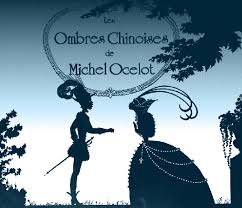Annotation:Women's dance in the Ombres Chinoises
X:1 T:Women's dance in the Ombres Chinoises M:6/8 L:1/8 R:Country Dance B:James Aird – Selection of Scotch, English, Irish and Foreign Airs, vol. 3 (Glasgow, 1788, No. 222, p. 163) N:”Humbly dedicated to the Volunteers and Defensive Bands of Great Britain and Ireland” Z:AK/Fiddler’s Companion K:G B|d2B d2B|G2G GAB|c2A c2A|FGA D3| d2B g2d|e2c g2e|dec BcA|G2G G2:| |:z|DFA cAF|GBd dBG|DFA cAF|GBd dBG| ece ege|dBd dgd|edc BcA|G2G G2:|]
WOMEN'S DANCE IN THE OMBRES CHINOISES. AKA and see "Kilkenny_Girl_(The)," "Vento's Farewell," "Woman's Dance." Scottish, Jig (6/8 time) G Major Standard tuning (fiddle). AABB. Encyclopedia Brittanica [1] gives:

Ombres chinoises, (French: “Chinese shadows”), European version of the Chinese shadow-puppet show, introduced in Europe in the mid-18th century by returning travelers. Soon adopted by French and English showmen, the form gained prominence in the shows of the French puppeteer Dominique Séraphin, who presented the first popular ombres chinoises in Paris in 1776. In 1781 he moved his show to Versailles, where he entertained the French court, and three years later he established a highly successful puppet theatre in Paris.
Using silhouettes cast by solid cardboard figures instead of the coloured transparencies popular in China, the ombres chinoises usually featured short, amusing fables such as The Broken Bridge, a dialogue in song between a farmer and a gentleman. Although most shadow theatres had closed by the 1860s, ombres chinoises were played in London until the end of the 19th century.
See notes for "annotation:Vento's Farewell" and "annotation:Kilkenny Girl (The)" for more.
